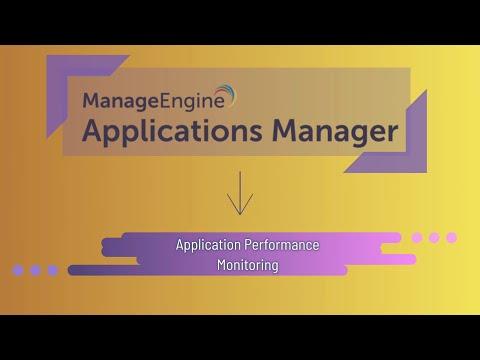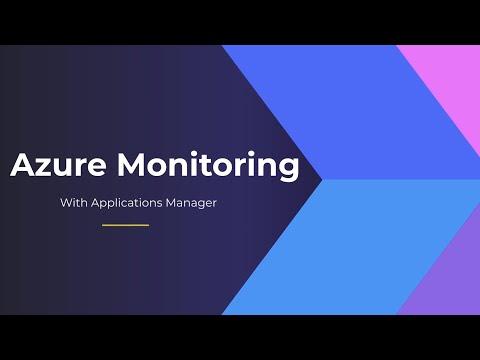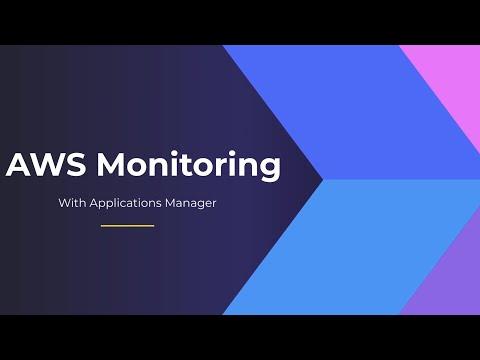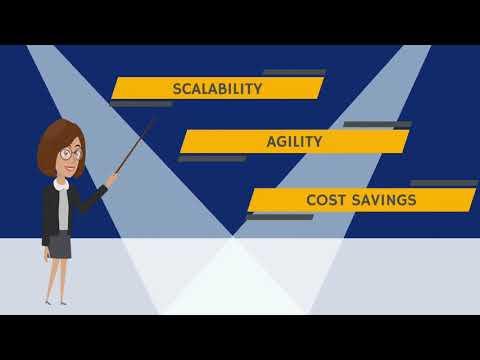In APMdigest's exclusive interview, Will Cappelli, Gartner Research VP in Enterprise Management, talks about his latest report: Will IT Operations Analytics Platforms Replace APM Suites?
APM: In your December report - Will IT Operations Analytics Platforms Replace APM Suites? - you say the importance of analytics to APM will grow over the next five years. How do you see that importance expanding?
WC: In one sense, non-analytic APM tools will continue to generate more and more data. As more and more applications are monitored, as the applications being monitored become more and more complex and interconnected, the quantity of data that is being generated by the tools grows. In order to understand what is going on in the application, deeper and deeper analysis capabilities are required.
The other sense is that there are a number of tasks that are carried out by the non-analytic tools, that will increasingly be taken up by some of the analytic tools. So, for example, there is a lot of root cause analysis, which is now not really done with analytics tools, it is done by looking at the topology map. As the application topologies become a lot more complex, you are not going to be able to just look at a map on the screen and find the root cause. You are going to have to apply some sort of automated algorithm that will identify what could be the cause. So these analytics tools will take over some of the function that has been traditionally performed by the non-analytics tools.
There is a third sense, as well. In general, predictive issues are becoming more important. Until now most of the burden of the application performance monitoring tools has been in the area of retroactive determination of the root cause of the problem. We are seeing, with the people we talk to, more and more focus on getting out ahead of problems before they occur. And in order to do that kind of predictive action, you need some kind of analytics tools.
APM: Do you see this driving any evolution in Gartner's 5-dimension APM model?
WC: The model was never meant to be a dogmatic statement of what constitutes APM. It describes the conceptual model that buyers and vendors have when they come to the APM market. So it is really not “prescriptive” as much as it is “descriptive”.
It can evolve, and ought to evolve. At Gartner, we have had the sense that it was going this way. If you look at APM portfolios in the next couple of years, the end-user experience will continue to grow in importance. Analytics will continue to grow in importance. And those three central areas – the architecture discovery, transaction profiling, and deep dive component monitoring – are not going to be as important as the end-user experience in monitoring and the analytics applied to the application performance.
APM: Are you seeing a lot more interest in APM-related analytics in the last year, not just from analysts and vendors but also from the users?
WC: Oh yes definitely. A lot of users call me up and ask about analytics in various forms. I think that some of the market evidence – if you look at the unquestionable success of a vendor like Splunk in the last year particularly, and other vendors that make up the overall analytics area, like Netuitive or Prelert – a lot of their activity has been in the application performance space.
To date the majority of use cases that we have seen for analytics have been in the application performance space. In fact, one of the interesting trajectories is that application performance monitoring initiates the interest in analytics. Analytics within IT seems to be a outgrowth of APM, and then extends to other areas of the stack, whether it's the virtual fabric or the network.
And now I'm beginning to see it move, although in the very early days, into the configuration and change space. I'm beginning to get some calls from end-users looking at the CMDBs or asset management databases or trouble ticketing systems, and asking if they can use analytics in these areas as well. That is a new development that takes us beyond performance and availability.
This interest in analytics is also tied into the general interest across IT and across business as well as in Big Data. And certainly once again Splunk is an important character in the story, at least for now. The Splunk IPO was built around the narrative of Splunk as the Big Data company. One of the interesting side effects of that was a big hype wave in 2012 that has shown a very favorable light on IT operations performance and availability as a great proof case for Big Data analytics.
The question is: can the Big Data analytics move beyond IT operations? That is the open question that I think a lot of users have. Right now, I would say that IT operations is the epicenter of the actual application of Big Data analytics technology. Where you see genuine Big Data technology actually deployed today in real life enterprises is around the IT operations.
APM: Your report seems to imply that in 2013 many organizations plan to spend less on the monitoring side of APM and more on the analytics.
WC: I'm not saying they're going to strictly spend less. I am saying the growth of APM, in terms of spending, will not be at the rates we've seen since around 2000 or so.
APM: Are the companies actually taking the budget that was designated for APM and now spending it on analytics?
WC: I think that is a good analysis. It does seem to me, based upon the people that I've talked to, when they look at what they're going to spend in 2013, they don't say “We're not going to spend on the APM stuff anymore.” But it is the same people that would've bought or expanded their APM investment that are talking enthusiastically about buying analytics technology or analytics services. That is why I was saying earlier that the analytics investment going on right now has a strong application performance and general performance and availability flavor to it, although now they are beginning to expand into other ITIL process areas.
I think there is some causal relationship between the acceleration of the growth and spend on analytics, and the deceleration of the growth of APM. I also think there are a couple of other factors that lead to the deceleration of APM growth that are not directly tied to analytics, but that is certainly one of the factors behind it.
But one can over-dramatize the changing fortunes of APM. It's a transformation from being the hot growth spot in the overall enterprise management space to more like some of the other submarkets in the enterprise management space.
APM: Are the organizations actually telling you that they believe analytics, in their minds, is going to replace traditional APM?
WC: Very few people will say that specifically. But what I do hear is rather than buying some deep dive component monitoring technology, they will invest in Splunk, Netuitive or BMC Proactivenet technology.
It is usually not put as someone saying: “We don't like APM anymore – we are going to buy this other stuff.” It is more: “This analytics technology seems to answer a very pressing need. I am going to buy analytics this year and I may not expand my APM or NPM investment.”
But we are not talking about a decline or contraction of the APM market. We are talking about a deceleration in growth.
Click here to read Part Two of APMdigest's Q&A with Gartner's Will Cappelli: Analytics vs. APM
Related Links:
Gartner Report: Will IT Operations Analytics Platforms Replace APM Suites?
The Latest
While most companies are now deploying cloud-based technologies, the 2024 Secure Cloud Networking Field Report from Aviatrix found that there is a silent struggle to maximize value from those investments. Many of the challenges organizations have faced over the past several years have evolved, but continue today ...
In our latest research, Cisco's The App Attention Index 2023: Beware the Application Generation, 62% of consumers report their expectations for digital experiences are far higher than they were two years ago, and 64% state they are less forgiving of poor digital services than they were just 12 months ago ...
A vast majority (89%) of organizations have rapidly expanded their technology in the past few years and three quarters (76%) say it's brought with it increased "chaos" that they have to manage, according to Situation Report 2024: Managing Technology Chaos from Software AG ...
In 2024 the number one challenge facing IT teams is a lack of skilled workers, and many are turning to automation as an answer, according to IT Trends: 2024 Industry Report ...
Organizations are continuing to embrace multicloud environments and cloud-native architectures to enable rapid transformation and deliver secure innovation. However, despite the speed, scale, and agility enabled by these modern cloud ecosystems, organizations are struggling to manage the explosion of data they create, according to The state of observability 2024: Overcoming complexity through AI-driven analytics and automation strategies, a report from Dynatrace ...
Organizations recognize the value of observability, but only 10% of them are actually practicing full observability of their applications and infrastructure. This is among the key findings from the recently completed Logz.io 2024 Observability Pulse Survey and Report ...
Businesses must adopt a comprehensive Internet Performance Monitoring (IPM) strategy, says Enterprise Management Associates (EMA), a leading IT analyst research firm. This strategy is crucial to bridge the significant observability gap within today's complex IT infrastructures. The recommendation is particularly timely, given that 99% of enterprises are expanding their use of the Internet as a primary connectivity conduit while facing challenges due to the inefficiency of multiple, disjointed monitoring tools, according to Modern Enterprises Must Boost Observability with Internet Performance Monitoring, a new report from EMA and Catchpoint ...
Choosing the right approach is critical with cloud monitoring in hybrid environments. Otherwise, you may drive up costs with features you don’t need and risk diminishing the visibility of your on-premises IT ...
Consumers ranked the marketing strategies and missteps that most significantly impact brand trust, which 73% say is their biggest motivator to share first-party data, according to The Rules of the Marketing Game, a 2023 report from Pantheon ...






